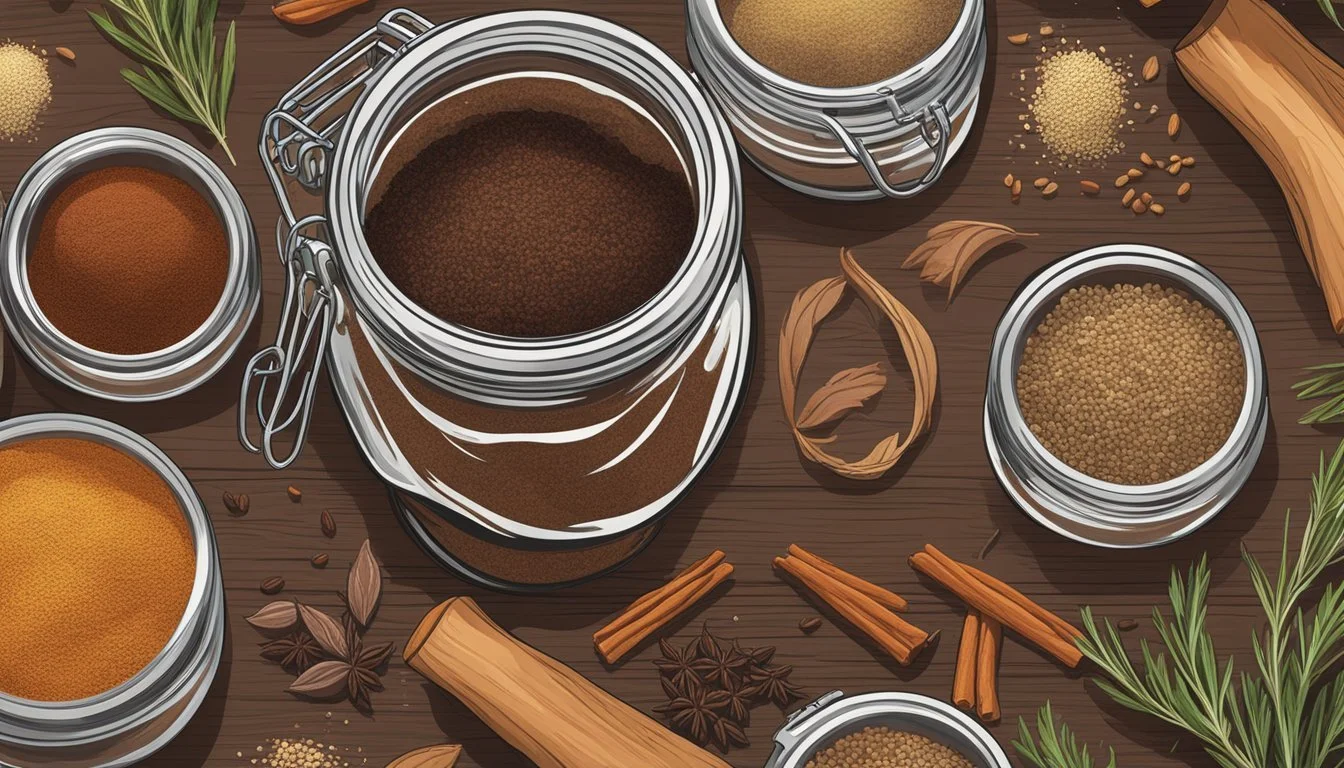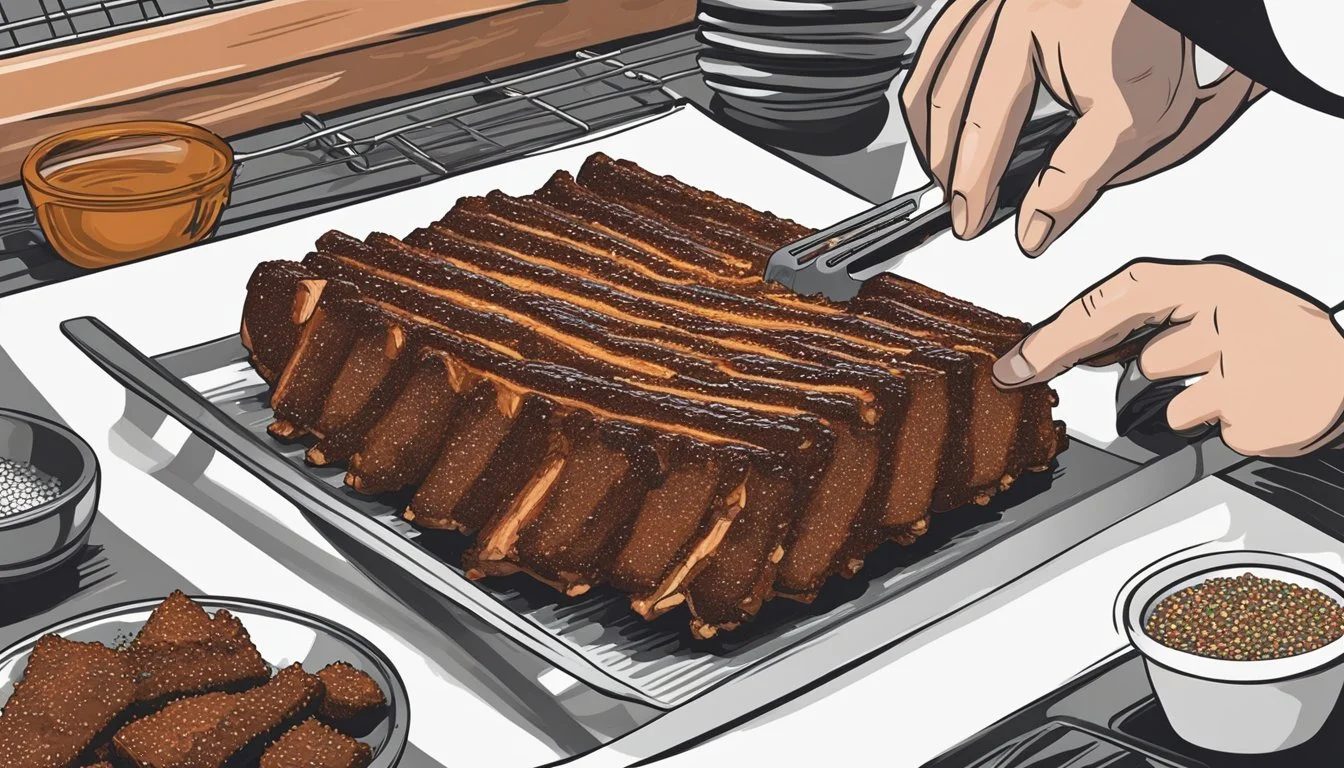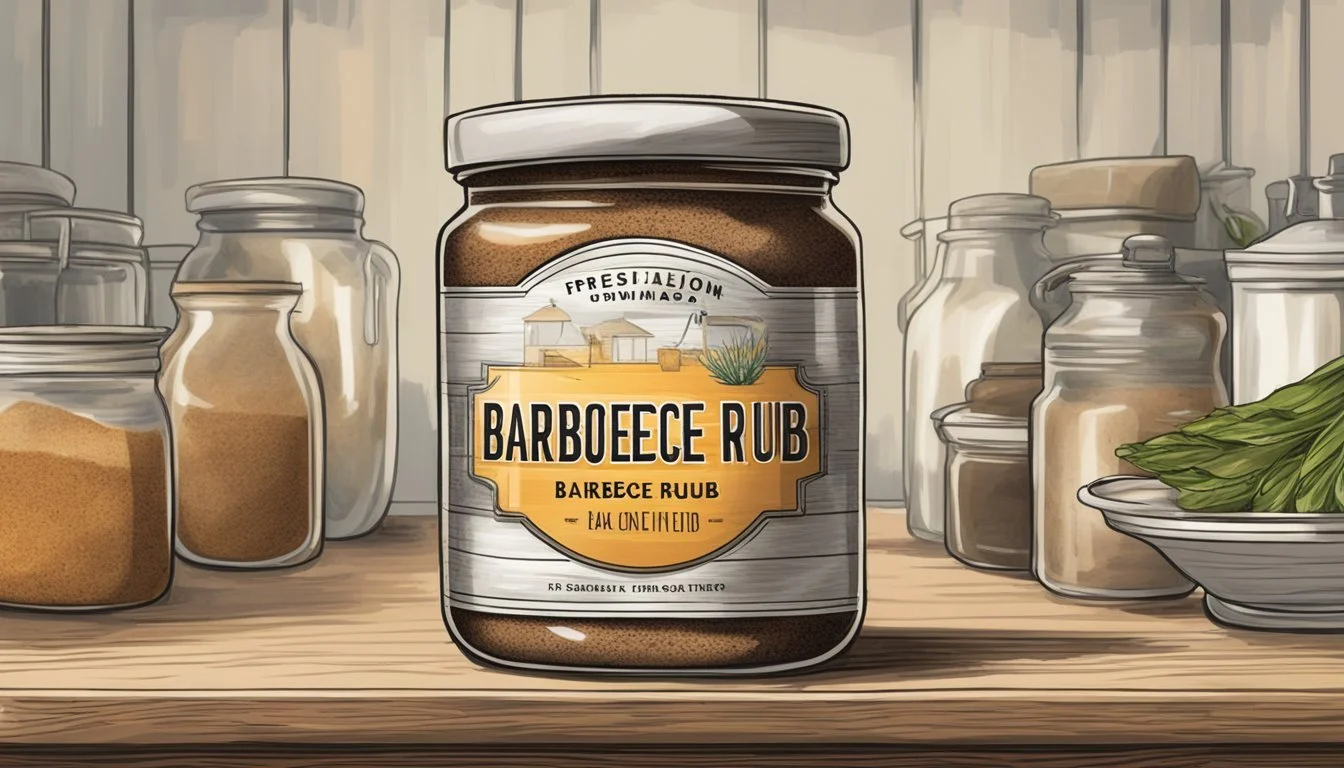How Long Does Barbecue Rub Last
Shelf Life and Storage Tips
Barbecue (What wine goes well with barbecue?) enthusiasts and culinary aficionados often turn to dry rubs as a way to enhance the flavor of meats and other grilled foods. A dry rub, consisting of a combination of herbs, spices, salts, and sugars (how long does sugar last?), is applied to the surface of the meat to impart a rich and complex taste profile before the cooking process begins. The longevity of a dry rub is determined by the freshness of the ingredients used and how well it is stored. Typically, a well-preserved dry rub can last up to 1-2 years without losing its potency, provided it is kept in a cool, dry place away from direct sunlight.
The shelf life of a dry rub is key to maintaining the quality and flavor of the blend. When a dry rub begins to go bad, it may become damp or clumpy, and its aromatic qualities may diminish, resulting in a stale taste. Keeping the rub dry is critical to its preservation, as moisture can lead to spoilage and the potential growth of mold or fungus, although this is uncommon with dry mixes due to their lack of moisture. To maximize the shelf life of a dry rub, enthusiasts should store their blends in airtight containers and avoid using wet spoons or hands when handling the rub, as this can introduce moisture and contaminants.
The Basics of Barbecue Rub
Barbecue rubs are pivotal for adding depth and complexity of flavor to meats, serving as a foundation to a successful barbecue. They offer a balance of flavors, often enhancing the natural taste of the meat.
Defining Barbecue Rubs
Barbecue rubs are blends of spices, seasonings, and herbs applied to meat before cooking. Dry rubs are a combination of dry spices that form a crust on the meat, sealing in flavors and sometimes creating a desirable bark on the outside. Their primary function is to enhance the flavor of the meat without the additional moisture.
The Role of Salt in Rubs
Salt is a crucial component in barbecue rubs, serving to amplify flavors and aid in moisture retention within the meat. Different types of salt, such as kosher salt, sea salt, and table salt are utilized, providing varying texture and flavor intensity. Kosher salt is frequently preferred for its grain size and its ability to distribute more evenly over the meat's surface.
Common Ingredients and Flavors
Barbecue rubs can include a wide range of ingredients to achieve the desired flavor profile. Typical components found in rubs include:
Sweet: Often provided by brown or white sugar
Spicy: Achieved through chili powder, black pepper, or cayenne
Earthy: With spices like cumin, paprika, or garlic powder
Herbal: Through dried herbs like thyme or oregano
The blend of these ingredients creates a harmonious flavor that complements the meat, with each ingredient contributing to a multi-layered taste experience.
Preservation and Shelf Life
Proper preservation of barbecue rub (how long does barbecue rub last?) significantly extends its shelf life while maintaining freshness. Factors such as moisture, temperature, and storage containers play crucial roles in the longevity of the product.
Factors Influencing Shelf Life
Barbecue rubs contain a variety of spices and herbs, which are sensitive to the environment they're stored in. Moisture is the enemy of dry rubs, as it can lead to clumping, loss of flavor, and potential mold growth. Exposure to high temperatures can deteriorate their potency, while sunlight can fade colors and further reduce flavor. The presence or absence of preservatives in the rub also affects how long it will last before losing its optimal taste and aromatic qualities.
Optimal Storage Conditions
To maximize a barbecue rub's shelf life, one should store it in an airtight container to prevent exposure to air and moisture. The container can be a jar, bag, or any sealable unit that keeps the rub dry. Storing this container in a cool, dark place helps to preserve the rub's essential oils and flavors. Some prefer to keep their rubs in the freezer to extend their storage time.
Shelf Life Expectations
On average, a barbecue rub's expected shelf life can range from one to two years. However, rubs stored in optimal conditions can maintain freshness for up to six months beyond this timeframe. It's important to note that while rubs may not spoil like fresh produce, their total time of peak flavor is finite and diminishes gradually after opening.
Preparing Barbecue Rubs
Barbecue rubs are essential in imparting flavor and creating a desirable crust on the surface of the meat. They can be tailored to enhance various types of proteins, from pork ribs (What wine goes well with pork ribs?) to fish, with a balance of spices, salts, and sugars.
Creating Your Own Rub Recipe
When creating a rub recipe, the focus is on achieving a harmonious blend of flavors to complement the chosen protein. A basic rub consists of salt, sugar, and spices. Ratios can vary, but a common starting point is a 1:1 ratio of salt to sugar, with spices adjusted to preferences. For example, beef brisket (What wine goes well with beef brisket?) or steak can handle robust spices like black pepper and paprika, while chicken or fish might benefit from lighter, aromatic herbs like thyme and basil.
Applying Rubs to Meats
To apply a rub effectively, ensure the meat's surface is dry to allow the rub to adhere properly. It's then advisable to generously season the meat, covering all surfaces. For pork ribs, a thorough application is key, getting the rub into all the nooks and crannies. In contrast, fish would require a lighter touch to not overpower the delicate flavor.
Wet Rubs Vs. Dry Rubs
Aspect Wet Rub Dry Rub Base Combines oil, vinegar, or marinade Just spices and seasonings Application Forms a paste-like consistency Coats the protein as a dry blend Suitability Better for tougher meats Ideal for creating a crust on the surface Moistening Agent Oil, Worcestershire sauce (how long does worcestershire sauce last?) Not typically used
Wet rubs are similar to marinades with added moisture, from ingredients like oil, vinegar, or Worcestershire sauce, that help to moisten the meat and can tenderize tougher cuts like pork or beef. Contrarily, dry rubs are a blend of dry spices and seasonings that create a flavor-packed crust, suitable for meats that cook quickly or have enough natural moisture, such as chicken or certain steaks.
Flavor Profiles and Pairings
Selecting the right barbecue rub and its flavor profile is essential for enhancing the taste of different meats. It's about balancing the spices with the natural flavors of the meat to achieve a harmonious result.
Matching Rubs with Different Meats
When pairing rubs with meats, it's critical to consider the type of meat and its characteristics. Here is a guide to help you match rubs with various meats:
Beef: For robust meats like beef, use bold spices such as black pepper and garlic. A smoky flavor is ideal for beef ribs and brisket.
Pork: Pork pairs well with sweet and spicy rubs. The natural sweetness complements pork ribs and shoulders, whereas a hint of spice can enhance a pork chop.
Chicken: Poultry requires a more delicate touch. Choose rubs with herbs and mild spices that accentuate the subtleties of chicken without overpowering it.
Fish: Lighter spices and citrus flavors are suitable for fish to preserve its delicate taste.
Lamb: Use aromatic spices like rosemary and mint which complement the rich flavor of lamb.
Remember, the thickness of the meat and the fat content also play a crucial role in how well the seasoning will adhere and penetrate.
Creating a Balance of Flavors
Balancing the five core tastes – sweet, salty, sour, bitter, and umami – is the secret to a perfect BBQ rub. Here's how you can achieve that balance:
Sweet: Brown sugar or honey counteracts the heat and complements the char during cooking.
Salty: Coarse salt is a fundamental ingredient in rubs, enhancing all other flavors.
Spicy: Chili powder or cayenne pepper adds heat, but use sparingly to avoid overpowering the meat's natural flavors.
Sour: Elements like lemon zest (how long does lemon zest last?) or tamarind can provide a tangy contrast to the richness of the meat.
Bitter: A touch of coffee or cocoa can deepen the profile and work particularly well with beef.
Umami: Incorporating ingredients like powdered mushrooms or soy sauce (how long does soy sauce last?) can introduce a savory depth to the rub.
Achieving harmony between these tastes will lead to a more complex and satisfying flavor experience.
Advanced Barbecue Techniques
In advanced barbecue, techniques are refined to optimize meat flavor, texture, and the longevity of the rub applied. These methods go beyond basic grilling, focusing on preparation, smoke infusion, and achieving the perfect crust.
Long-Term Meat Preparation
Long-term meat preparation involves strategic steps taken days in advance. An essential factor is the shelf life of the barbecue rub. Typically, a dry rub can last about six months, maintaining peak flavor if kept in an airtight container and stored in a cool, dry place. For best results, meats can be seasoned with rubs and then frozen, which not only extends the shelf life of the rub but also allows for more profound flavor penetration as the meat slowly thaws.
Enhancing Smoke Absorption
Enhancing smoke absorption is critical for imparting that coveted smoky flavor. Smoking meats at low heat encourages the absorption of smoke, as porous meat fibers expand at these temperatures. Using woods such as hickory or mesquite can add a pronounced smoky essence. Furthermore, incorporating smoked paprika (how long does smoked paprika last?) into the barbecue rub adds a layer of smoky depth even before the cooking process begins.
Crust Formation and Texture
Achieving the perfect crust requires attention to heat management and rub application. Before grilling, meats should be patted dry to help the rub adhere better and enhance crust formation. During cooking, maintaining consistent heat helps create a richly caramelized crust without burning the spices. The balance of sugar and salt in the rub influences both the flavor and the color of the crust, leading to that sought-after textural contrast between the outer layer and the tender interior.
Recognizing Signs of Spoilage
When assessing whether a barbecue rub has gone bad, one should pay close attention to changes in the color and smell which are indicative of spoilage.
Changes in Color and Smell
Color: A fresh BBQ rub should maintain its original coloration. If the rub has dulled or if there are any noticeable discolorations, such as white spots or areas that have turned a different shade, it may indicate mold or moisture contamination.
Smell: BBQ rubs typically have a potent, spicy aroma. An off or stale smell, or a significant loss of the original fragrance, suggests the spices may have spoiled or lost their potency.






